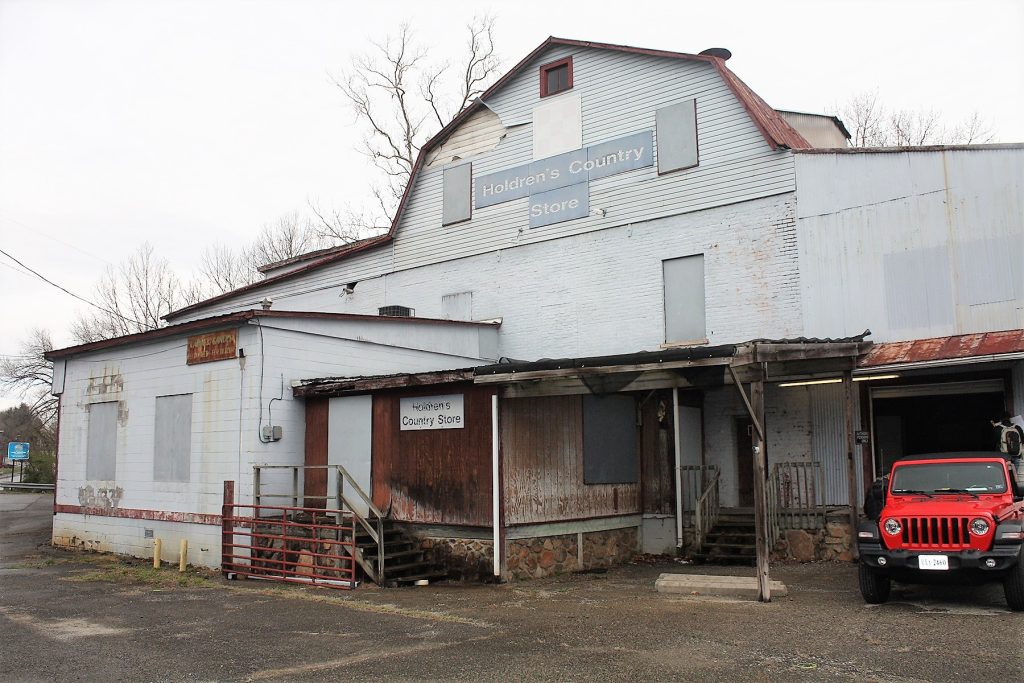By Debbie Adams
The former Gish Mill property in Vinton “has been determined to be eligible for state and national historic registry and we can begin to submit final paperwork to formally nominate the structure,” is the announcement from Vinton Assistant Town Manager/Economic Development Director Pete Peters.
The action was taken by the Virginia Board of Historic Resources and the State Review Board at their quarterly meeting on June 18. They meet each quarter to consider new nominations of historic sites for listing in the Virginia Landmarks Register (VLR) and the National Register of Historic Places (NRHP).

The town will next submit Part 2 of the application which the DHR will review for certification of rehabilitation work.
The Gish Mill property is located at 350 Gus Nicks Boulevard along Glade Creek. Behind the mill are remnants of the historic dam that once spanned the creek. Water from the race turned the wheel which turned the equipment.
Vinton Town Council adopted a resolution in April approving a contract for the conveyance of the Gish Mill property from the town to developers David Hill and David Trinkle, who have formed Gish Mill Davii, LLC, to redevelop the historic mill.
The town purchased the property, then known as Holdren’s Country Store, in November 2015, to preserve and rehabilitate the property for commercial use. The 14,000-square-foot structure was a former grist mill, then farm supply retail and warehouse, operated continuously since the 1770s. The iconic mill is featured on the Town Seal.
Following the issuance of a Request for Proposal (RFP) in November of 2019, the town received a formal proposal from Gish Mill Davii, LLC, to rehabilitate and convert the historic property into a mixed-use development to include a small restaurant, hospitality (five rental rooms with an Airbnb model) and a local retail operation selling locally sourced products, similar to a country store.
The redevelopment project plans to utilize historic tax credits to accomplish the redevelopment, with an expected investment of approximately $2 million and the creation of approximately 42 jobs.
Vinton Town Council agreed to terms for a Contract of Sale for the property to the developers in April 2020 subject to a nine-month due diligence period to pursue the historic designation and to allow the developer to secure both private financing and historic grant funding. If all goes well, the developers expect to close on the sale of the property in early 2021 and construction could begin shortly after.
In the initial application the exterior of Gish Mill was described as a ca. 1846 three-story brick grist mill with multiple additions constructed between ca. 1930 and 1955 as it continued to evolve and operate as a mill. The various additions append the original central brick block. The ca. 1846 brick block at the center, comprised of three stories with a full basement, housed the processing operations during the entirety of the building’s use as a mill. This section is capped by a ca. 1940 gambrel roof clad with metal and stands on an uncoursed stone foundation.
A grain elevator penthouse extends above the roof. The walls in this section are handmade bricks.
A description of the interior of the structure states, “The original central block historically served as the hub of industrial activity with grinding taking place on the first floor and cleaning on the second and third floors. Historic timber columns and beams are partially visible on the first floor of the original block. The rear room on the first floor features exposed brick walls and wood rafters. Some of the historic equipment remains intact in this room.”
From 1982-2015, Holdren’s Country Store occupied the first story of the original block as well as the two storefront additions. These spaces feature non-historic interior finishes. The second floor of the original block has not been significantly modified by non-historic finishes.
The second floor features exposed whitewashed brick walls, ceiling joists, wood floors, and heavy timber beams and columns. Remnants of processing equipment remain intact on this floor, including conveyor belt wheels, hoppers, and the grain elevator.
The third floor has not been modified by non-historic materials. The stud walls and roof structure remain exposed. A large hole at the north end of the wood floor appears to have been purposefully created to connect milling equipment on the second floor to the floor above. Historic mill equipment remains intact on this floor as well. The basement has also remained untouched by contemporary materials. The stone walls are exposed as are the first floor joists, the heavy timber structural elements, and the dirt floor.
The basement contains a significant amount of milling machinery including wheels, conveyor belts, and grain hoppers. The interior of the grain bin addition features exposed concrete walls and floors. The two historic additions to the east of the original block feature wood floors, exposed wood wall framing and exterior siding, and exposed ceiling joists.
The “Statement of Significance” submitted said, “Gish Mill is significant as a rare surviving example of a mid-nineteenth century mill that expanded and evolved over the years to accommodate new technology and the changing market for agricultural products. Gish Mill also served as the industrial and economic impetus for the establishment and development of the surrounding town of Vinton. Gish Mill appears to be eligible for listing on the National Register with significance on the local level in the areas of industry and architecture for the period 1846-1956, encompassing the date of construction through the decades the mill was operated under local ownership.”
The preliminary application highlighted information on the history of Gish Mill. The first members of the Gish family arrived in the Roanoke Valley in the late eighteenth century, among numerous German settlers who established themselves here after the Revolutionary War.
Many of the immigrants settled in close proximity to the Roanoke River and its tributaries, such as Glade Creek and Wolf Creek, as they provided fertile soil for farming and powering mills. Early industrial activity in Southwest Virginia primarily consisted of the construction and operation of grist mills.
In 1798, David Gish Sr. received a permit from the Botetourt County Clerk’s Office to construct a mill along Glade Creek.
By 1860, 12 mills existed in Roanoke County (with Gish Mill being the only one extant today). These mills, typically located in rural areas, were powered by water to grind or pound grain from local farms and processed in the mills as flour, meal, or feed to for both humans and animals. These mills were not only industrial centers, but commercial and social gathering places as well.
Locals knew that mills were often “where you could get the latest prognostications for the day’s or season’s weather or where you could get the latest on crop growth, farming methods, and who had what for sale or barter.”
Early roads and communities would often develop around mills. The early community that developed around the mill in the early nineteenth century was known as Gish’s Mill, which would become the Town of Vinton by 1884.
Hill and Trinkle have described the redevelopment of Gish Mill as a challenging project, but with the potential to offer a unique dining, hospitality, and shopping experience. They have approached the project with a “healthy level of hesitation,” but believe the timing is right to begin preservation efforts on the “incredibly important” historic site. Historic tax credits are imperative for the project to go forward financially. Approval for the state and national registries will be a monumental step forward when finalized.













